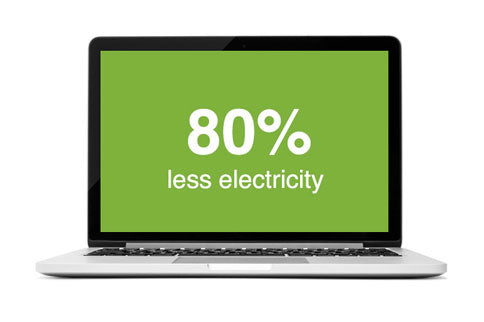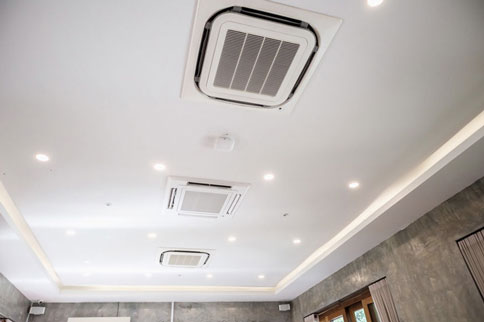Top 3 energy wasters in the office
Setting up an eco friendly office is straightforward and can be done with minimal cost to reduce electricity waste.
Did you know Notebook PC’s are more energy-efficient than Desktop PC’s? Notebook computers consume up to 80 percent less electricity than desktop computers and use 2/3rds less energy. However, the energy-efficiency does vary between models. High-performance notebooks may be similar to lower-energy consuming desktops in energy usage, but notebooks mostly use much less power.
Notebook computers often peak at a maximum draw of only 60 watts, whereas common desktops may peak around 175 watts. Desktop computers often include power supplies with maximum capabilities far beyond its system needs at 300 watts or higher, whereas laptops contain smaller power supplies between 30 and 90 watts.
To complement these energy-saving practices, consider the TrickleStar® Energy Saving Advanced Keyboard. It employs highly-accurate radar sensing technology to detect user absence from the computer, automatically transitioning it into sleep mode promptly. Compatible with Windows, Linux, and Mac operating systems, this energy saving keyboard requires no additional software installation, delivering up to a remarkable 43% average computer energy reduction*.
#1 Notebook vs Desktop PC’s
Did you know Notebook PC’s are more energy-efficient than Desktop PC’s? Notebook computers consume up to 80 percent less electricity than desktop computers and use 2/3rds less energy. However, the energy-efficiency does vary between models. High-performance notebooks may be similar to lower-energy consuming desktops in energy usage, but notebooks mostly use much less power.
Notebook computers often peak at a maximum draw of only 60 watts, whereas common desktops may peak around 175 watts. Desktop computers often include power supplies with maximum capabilities far beyond its system needs at 300 watts or higher, whereas laptops contain smaller power supplies between 30 and 90 watts.
To complement these energy-saving practices, consider the TrickleStar® Energy Saving Advanced Keyboard. It employs highly-accurate radar sensing technology to detect user absence from the computer, automatically transitioning it into sleep mode promptly. Compatible with Windows, Linux, and Mac operating systems, this energy saving keyboard requires no additional software installation, delivering up to a remarkable 43% average computer energy reduction*.

#2 AC setpoint set too low
Energy waste is a significant concern, no matter what size office you occupy. Offices often use air-conditioners with no automation and rely on staff to manage them efficiently often resulting in over 50% energy waste. An air conditioner that is set too cold results in over-cooling and energy waste. Similarly with heating, if a setpoint is set too high in colder climates, overheating results in the office becoming stuffy, uncomfortable and leading to occupants feeling drowsy.
No automation means heating or cooling is left on over lunch periods when the office is unoccupied and sometimes is even left on overnight or over the weekend if no-one remembers to switches it off. Installing a Wi-Fi Smart Thermostat is a great way to manage your HVAC system more efficiently through automation and to conserve energy.

#3 Leaving lights on
Turning off lights saves energy generally. Sometimes it can actually be cheaper to leave a light on rather than turn it off. Incandescent lights provide the greatest savings. If you’re not using them, turn them off. They’re the least efficient light and 90% of the energy they use is heat. Turning them off will also help cool a room in summer, which could potentially affect other energy costs as well, such as air conditioning.
Savings get more complicated with CFL or LED lights. Energy.gov offers this general rule of thumb for deciding if turning off CFL lights saves energy: Leave them on if you will return to a room within 15 minutes; if you’re going to be gone for more than 15 minutes, turn them off. Energy.gov says that this strategy can also help extend the life of a CFL bulb because its operating life is more affected by the number of times it’s switched on and off.
LED lighting is not affected by being turned on and off. This makes LED bulbs a top energy savings lighting choice. They’re a great option, Energy.gov says, when used with occupancy sensors.
Introducing the Light-level Sensor Advanced PowerStrip—an innovative solution that conserves energy by managing power to the switched outlets based on room lighting status. This advanced power strip is ideal for curbing energy waste from various office electronics and appliances like photocopiers, printers, shredders, water coolers, and vending machines, ensuring they power on only during operating hours.







